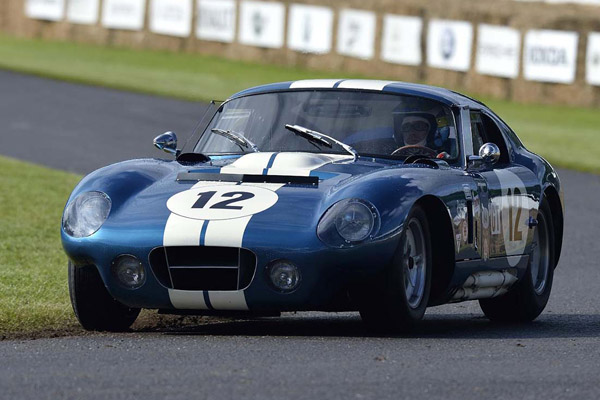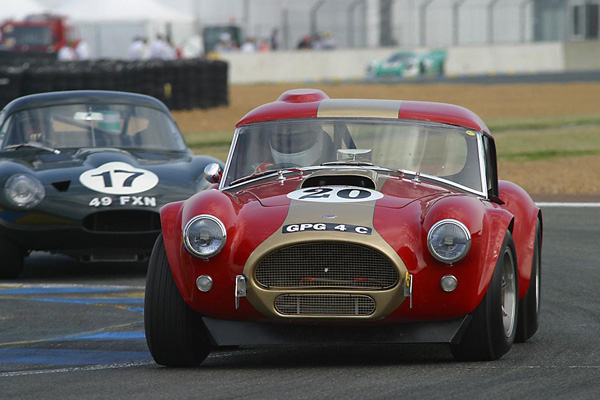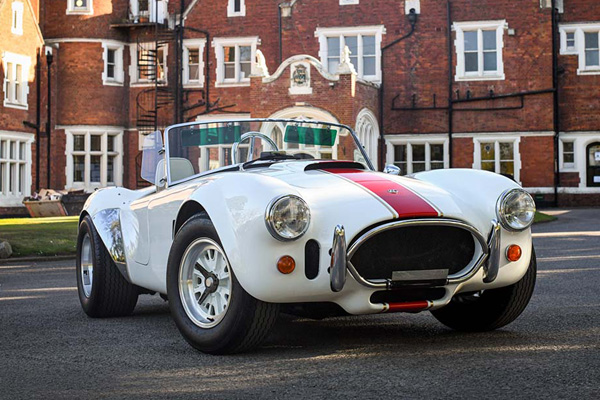The Cobra story
It could all have been very different for the AC Cobra. Rather than the Ford engines it’s so closely associated with that turned a small scale British sports car into the most famous in the world, it was supposed to have used Chevrolet Corvette power.
Carroll Shelby, who was the driving force behind so much of the Cobra’s development, recognised the need for a potent sports car to keep US buyers happy. He also spotted that AC was soon to be without an engine when its existing supplier, Bristol, ceased production of its venerable straight-six in 1961. Putting two and two together, Shelby approached Chevrolet about using its Corvette V8 engines in a new incarnation of the AC Ace two-seat roadster. However, Chevy declined the chance, reckoning this new proposal would be too great a threat to its own sports car.

Ford steps up
Undeterred, Shelby turned to Ford, which had already seen its own 2.6-litre straight-six from the Zephyr used in the AC Ace. Shelby had no interest in such small capacity motors – he wanted a V8 and nothing else. Ford was receptive to the idea and provided a couple of its 3.6-litre (221cu in) motors to AC in the UK to trial fit in a modified chassis. This new thin-wall small block V8 was ideal for the purpose as it was light, compact, powerful and had plenty of tuning potential.
This turned into the first ever Cobra, chassis CSX2000, which was then shipped to the US for Shelby to assess and further refine. By this time, the car had a much stronger back axle and disc brakes all-round to cope with its hugely increased performance over the Ace. Even so, because he was ever the shrewd businessman, Shelby decided to make the car easier to build and service by switching from labour-intensive inboard rear discs to outboard items. He also moved the fuel filler to the centre of the rear deck so it was simple to fill it up regardless of which pump you used. It also meant there were no issues with swapping it from side to side to suit right- or left-hand drive cars.

The Cobra is born
When this new AC Cobra, or AC Shelby Cobra as it was more usually known in the US, went on sale in 1962, the 3.6-litre V8 had given way to a 4.2-litre (260cu in) unit to offer even better performance. This engine remained in place for the first 75 Cobras made before a change was made to the 4.7-litre (289cu in) version to gain further pace and fit in with Ford’s preferred sizing. Those very early 4.2s are now highly prized, but the 4.7 is the more flexible and easier car to drive.
However, AC was far from done with its own updates for the Cobra. Not long after the car was launched, a new rack and pinion steering set-up was introduced, along with improved suspension, which earned it the MkII tag. It’s thought 528 MkIIs were made up to the middle of 1965.

Larger engines and more power
From here, the Cobra set off on a path for more power with first a 6.4-litre V8 motor trialed, but AC and Shelby both realised the original Ace-based chassis was not up to the job anymore. A new frame was designed using a simple but strong twin rail base to mount the new 7.0-litre (427cu in) V8 in. This produced the MkIII Cobra that had as much as 485bhp and top speed of up to 185mph if you could hang on in the exposed and blustery cabin. No wonder race versions of the Cobra were often seen with a hard-top roof to offer some protection to the driver in longer events. This also eventually led to the Daytona coupe models.

The snake goes racing
Motorsport was fundamental to the success and marketing of the Cobra on both sides of the Atlantic. Shelby had been involved in racing for years before he hatched the Cobra plan, so it was a natural choice for him. Depending on the category and driver, the Cobra could be unbeatable or a handful, and there was even a dedicated model for drag racing in the US called the Dragon Snake with narrower front tyres and wider rears to suit racing down the strip.
For 1966, the Super Snake was announced as the ultimate Cobra of the time and Shelby gave the car to Bill Cosby. It was claimed this car could hit 200mph, though you would have had to have been extremely brave to attempt this given the car was said to be a handful even by experienced Cobra pilots. By 1969, the Cobra had served its purpose for AC and sales were dwindling fast in Europe as more sophisticated and aerodynamic cars offered more pace and better protection from the elements. Yet Carroll Shelby was far from done with the idea and continued to develop the Cobra over many years, and it continues in production to this day at the Shelby factory in the US.

Enduring popularity
In the UK, the Cobra also refused to die as British firm AutoKraft started to build continuation cars from 1986 with Ford V8 engines. This low level production carried on for some years until the AC Cars Group was bought over by Pride Automotive and launched its own Superblower model in 1997. This was followed by several other versions, including one powered by a twin-turbo Lotus V8 motor. Then AC Motor Holdings took over the reins in 2002, while 2008 saw Acedes Holdings became the UK operator. Now, there are still official Cobras available, including ones with electric power to add another twist to this snake’s long and fascinating tail. Whichever Cobra gets your pulse racing, it’s a classic car that demands attention from everyone who sees it and especially those who drive it.

COMMENT